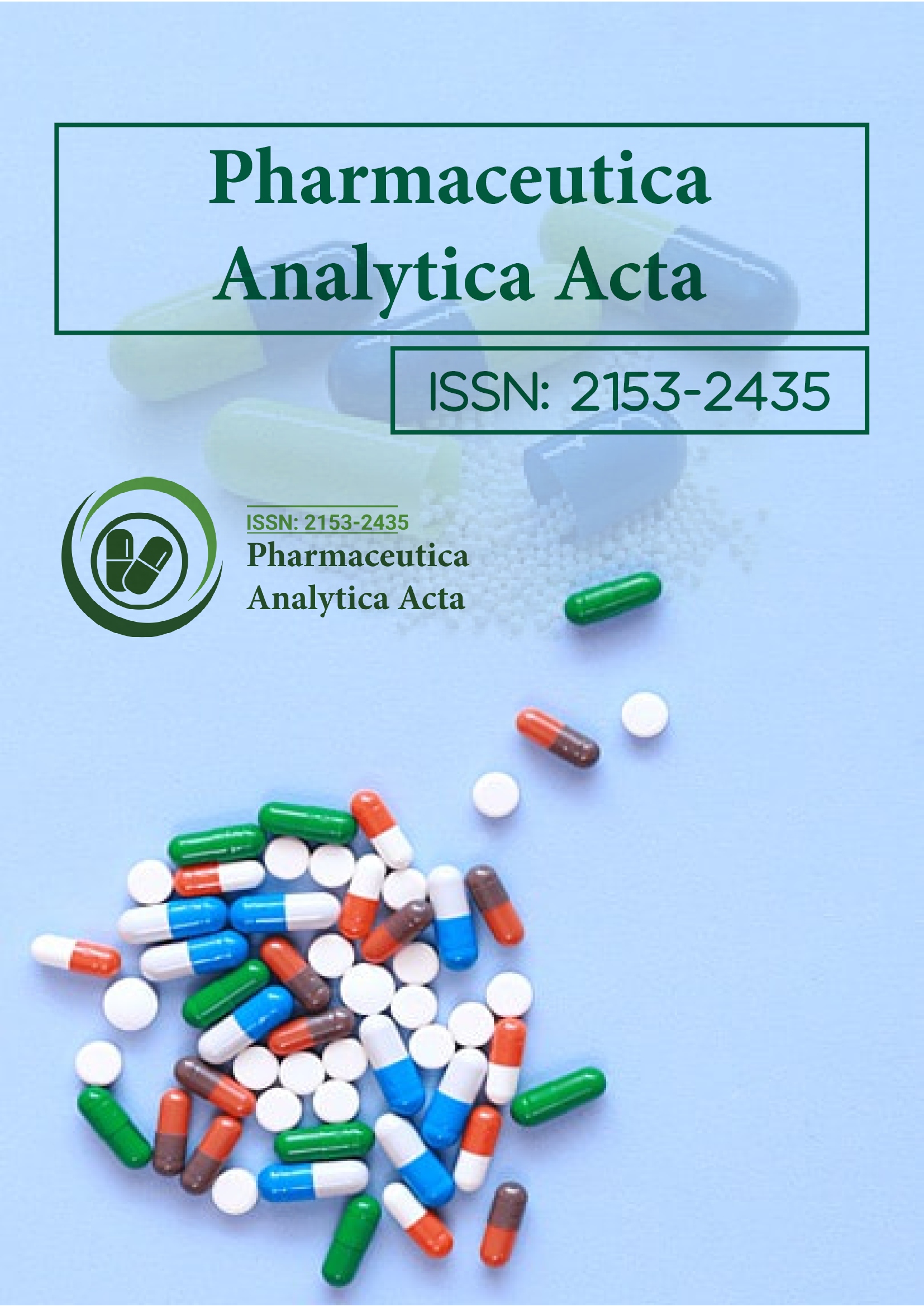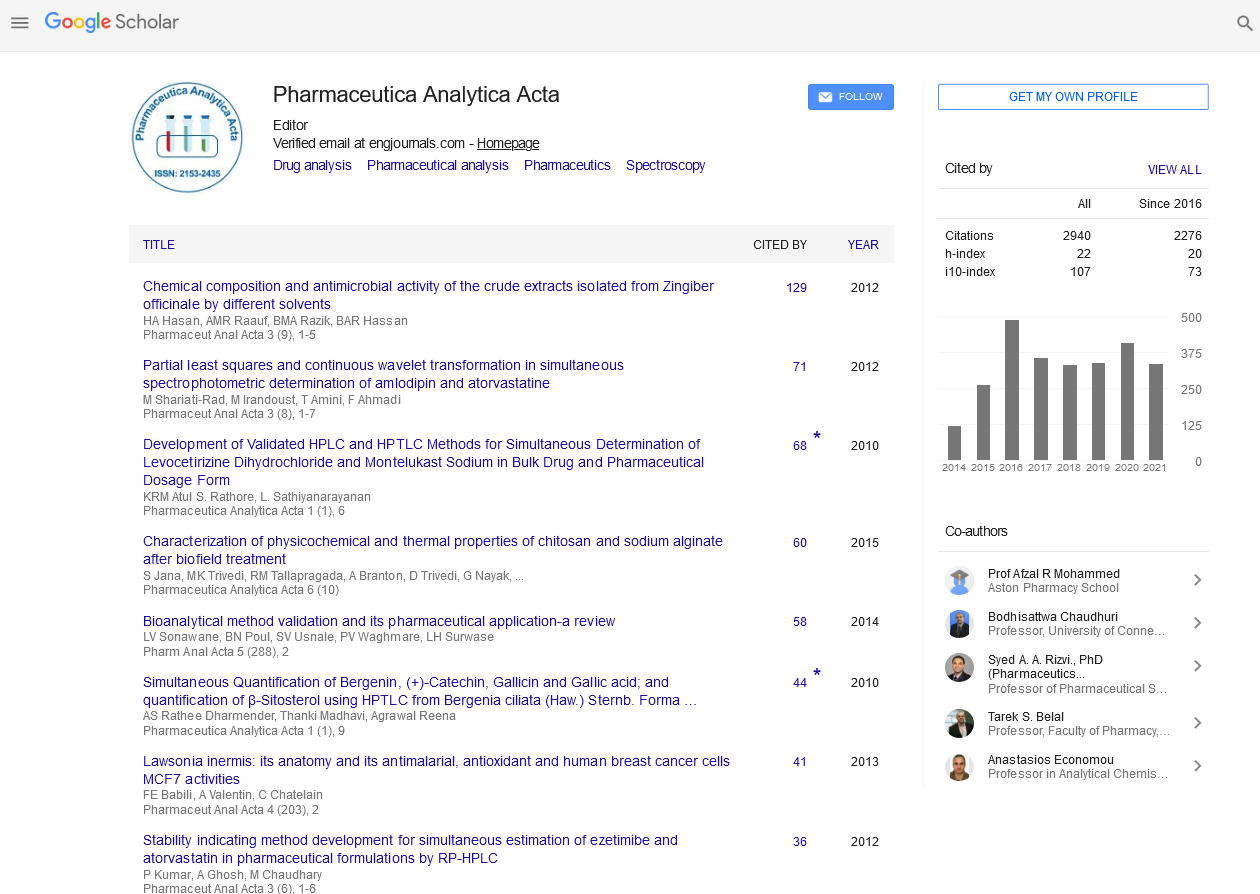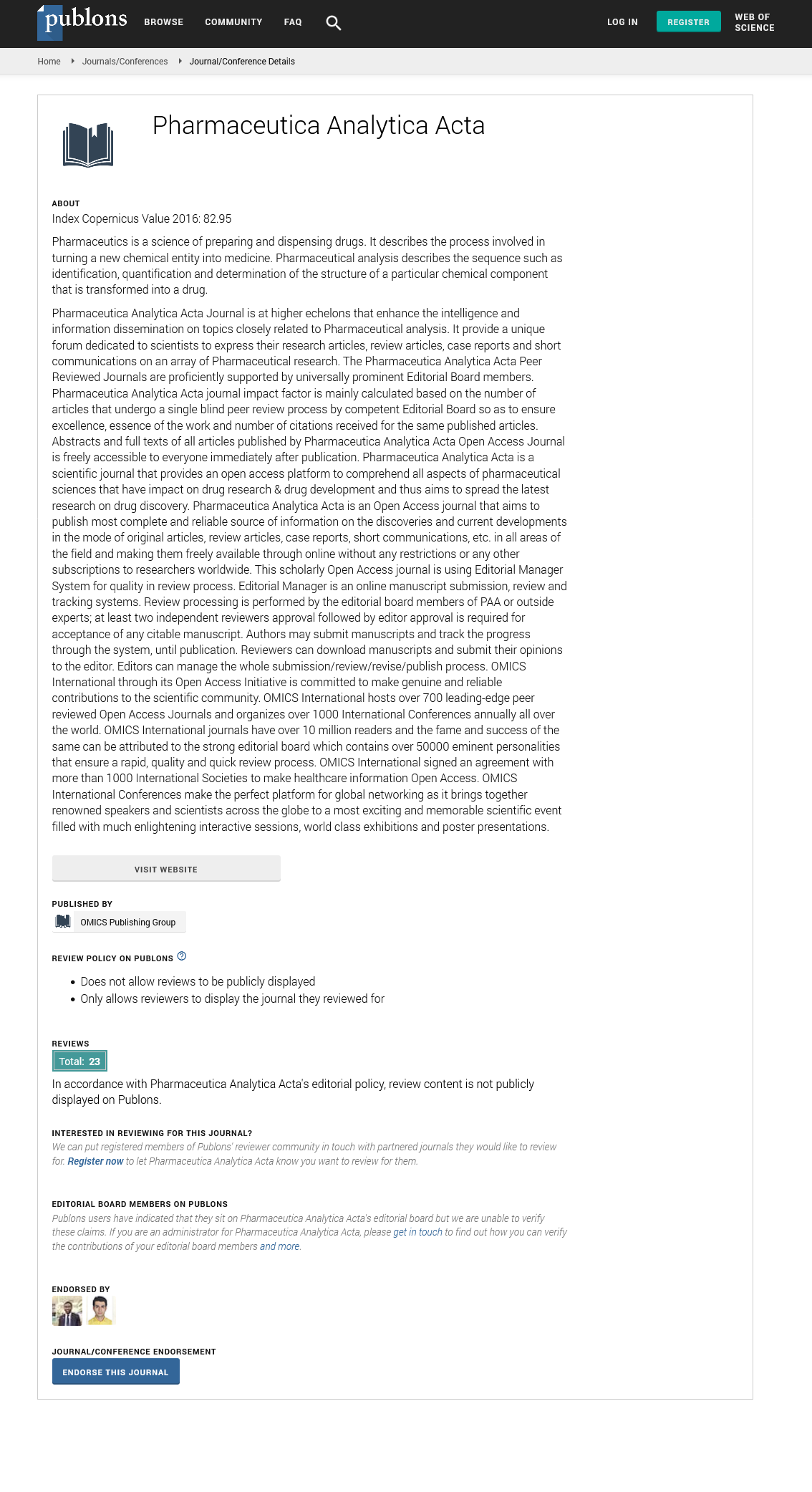Indexed In
- Open J Gate
- Genamics JournalSeek
- Academic Keys
- JournalTOCs
- The Global Impact Factor (GIF)
- China National Knowledge Infrastructure (CNKI)
- Ulrich's Periodicals Directory
- RefSeek
- Hamdard University
- EBSCO A-Z
- OCLC- WorldCat
- Publons
- Geneva Foundation for Medical Education and Research
- Euro Pub
- Google Scholar
Useful Links
Share This Page
Journal Flyer

Open Access Journals
- Agri and Aquaculture
- Biochemistry
- Bioinformatics & Systems Biology
- Business & Management
- Chemistry
- Clinical Sciences
- Engineering
- Food & Nutrition
- General Science
- Genetics & Molecular Biology
- Immunology & Microbiology
- Medical Sciences
- Neuroscience & Psychology
- Nursing & Health Care
- Pharmaceutical Sciences
Commentary Article - (2025) Volume 16, Issue 2
Quality Control and Assurance in Pharmaceutical Manufacturing
Miguel Silva*Received: 31-May-2025, Manuscript No. PAA-25-30215; Editor assigned: 02-Jun-2025, Pre QC No. PAA-25-30215; Reviewed: 16-Jun-2025, QC No. PAA-25-30215; Revised: 21-Jun-2025, Manuscript No. PAA-25-30215; Published: 30-Jun-2025, DOI: 10.35248/2153-2435.25.16.813
Description
Quality control form the foundation of modern drug manufacturing, ensuring that every product meets required standards for safety, effectiveness and consistency. These systems protect patients by preventing poor-quality or contaminated medicines from reaching the market. In this industry, quality is not limited to the final product it begins with sourcing raw materials and continues through formulation, packaging, storage and distribution. The main goal is to maintain product integrity, compliance with regulations and public trust. It establishes a structured framework for production, while quality control involves the testing and monitoring activities that verify standards are met. Together, they guarantee that drug products are manufactured in a consistent, validated and reliable way. The basis of quality management lies in following Good Manufacturing Practices. These standards define clear requirements for facilities, equipment, training and documentation. Every step, from weighing ingredients to final labelling, must be recorded and reviewed. Manufacturers are required to maintain strict hygiene, control the environment and validate every process that influences quality. Regular inspections and audits confirm compliance. Precise documentation is essential, as it ensures traceability and accountability. Any variation from the approved process must be properly investigated and corrected to avoid future issues.
Quality assurance is preventive rather than reactive it aims to build quality into each process step. It involves developing clear operating procedures, ensuring well-trained staff and promoting a culture of continuous improvement. Risk management plays an important role by identifying weak points in production and introducing preventive measures. Validation and qualification confirm that methods, equipment and manufacturing steps perform reliably and consistently. Quality assurance also covers supplier evaluation to confirm that raw materials and ingredients come from verified, dependable sources. Quality control focuses on systematic testing of materials, intermediates and finished products to confirm compliance with specifications. Analytical testing checks physical, chemical and biological properties to ensure they meet required limits. Laboratories perform testing for strength, purity, stability and content uniformity. Stability studies are crucial to confirm that medicines remain safe and effective throughout their shelf life. Modern laboratories use advanced tools such as chromatography and spectroscopy for accurate results. These analyses depend heavily on calibration, method validation and strict process adherence.
In recent years, digital systems have transformed quality management. Automation, electronic data systems and computerized batch records have improved efficiency and traceability. Laboratory information systems allow seamless management of analytical data, supporting accuracy and data integrity. Automated testing and sampling reduce human error and speed up processes. Artificial intelligence and predictive models are increasingly used to track performance, identify early warning signs and prevent potential deviations before they affect product quality. Real-time release testing and continuous monitoring illustrate how technology improves process control and consistency. Digital transformation also strengthens global compliance and harmonization. Regulatory authorities across the world demand transparency, reliability and reproducibility in manufacturing and testing. Companies must prove that their products consistently meet standards and that their systems remain in control. Statistical process monitoring and data analysis tools help detect small variations, allowing corrective action before any major quality failure occurs. These innovations have shifted quality management from a reactive to a proactive approach, improving both efficiency and reliability.
Human expertise, however, remains central to ensuring quality. Skilled professionals are responsible for analysing data, validating systems and making critical decisions in investigations or batch approvals. Continuous training ensures that staff remain competent and aware of evolving technologies and standards. Ethics, integrity and precision are key to building a strong culture of quality. Collaboration between departments production, quality control, engineering and regulatory oversight creates an integrated system that maintains compliance and resolves challenges effectively. As global supply chains expand, maintaining consistent quality across multiple facilities and regions has become increasingly complex. International standards such as those established by recognized organizations support harmonized quality systems that encourage continuous improvement. These frameworks ensure that medicines produced in one country meet the same safety and quality expectations as those made elsewhere. The ultimate purpose of quality control and assurance in drug manufacturing is to ensure that every product reaching a patient is safe, effective and trustworthy. The combination of scientific precision, advanced technology and regulatory discipline forms a reliable safeguard for public health. As innovation continues, the future of quality management will depend more on automation, artificial intelligence and data-based decision-making, but the essential principles of consistency, safety and ethical responsibility will always remain at its core.
Citation: Silva M (2025). Quality Control and Assurance in Pharmaceutical Manufacturing. Pharm Anal Acta. 16:813.
Copyright: © 2025 Silva M. This is an open-access article distributed under the terms of the Creative Commons Attribution License, which permits unrestricted use, distribution and reproduction in any medium, provided the original author and source are credited


